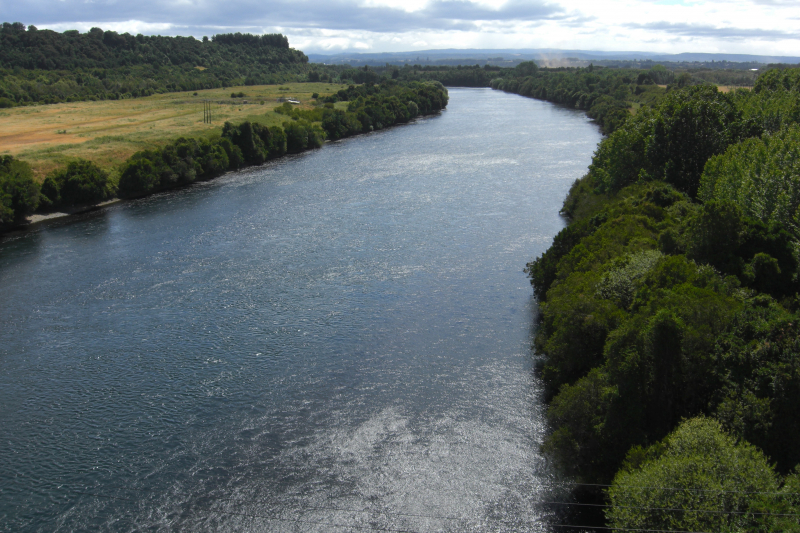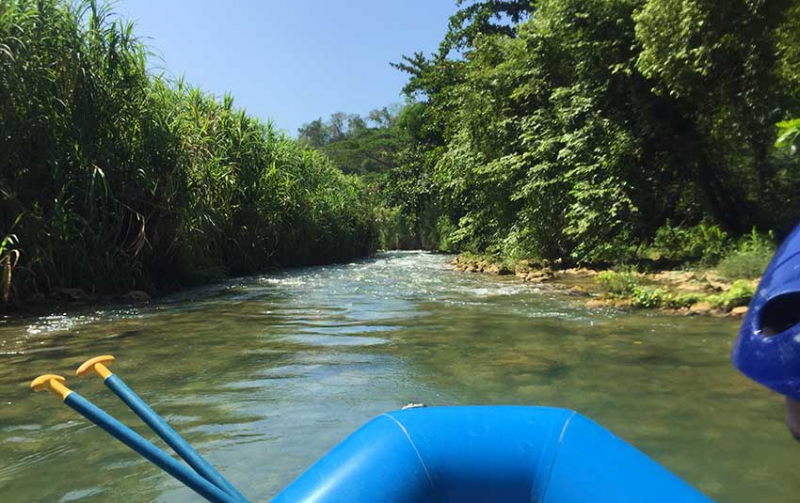Bueno

The Bueno River flows across southern Chile. It rises in Ranco Lake and, like most Chilean rivers, flows into the Pacific Ocean at the Valdivian Coastal Reserve's southern edge. The lower flow constitutes the border between the provinces of Osorno and Ranco. It is also the northern limit of the indigenous Huilliche territory of Futahuillimapu, according to legend. The river runs through the commune of Ro Bueno, which is named for the river.
The Pilmaiquén River and the Rahue River, which enter the Bueno River from the south, are its principal tributaries. The former is Puyehue Lake's outlet, while the latter is Rupanco Lake's outlet. Starting upstream, the river has the following settlements: Puerto Nuevo at the source, Ro Bueno, Trumao, Llancacura, and La Barra at the ocean's outflow.
Huenuleufu was the river's original Huilliche name, a mix of huenu "upper" and leufü "river." As a result, Ro Bueno is a hybrid word, with huenu replaced by phono-semantic matching with the Spanish word bueno, which means "good."
The Battle of Ro Bueno, fought in 1654 between a Spanish slave-hunting expedition and local Mapuche-Huilliches, took place on the Bueno River. The Spanish forces were clearly defeated in this combat, as their pontoon bridge collapsed, resulting in numerous losses. The river was once again the scene of a Spanish-Huilliche fight on January 27, 1759. The Spanish built a Franciscan mission and a fort near to the river in the years after the conflict.
Length: 130 km (81 mi)







